In Pictures: Inside a modern biplane factory
- Published
In a complex of hangars deep in the Sussex countryside, a team of engineers is restoring and rebuilding early 20th Century aircraft. The brainchild of engineer Guy Black, Retrotec is actually modern biplane factory.
It specialises in rare examples of World War One planes including a Bristol F2B Fighter and DH9 bomber; as well as Hawker Nimrods, a Hawker Fury and a Hawker Hart from the 1930s era.
The company has clients including museums and private customers.
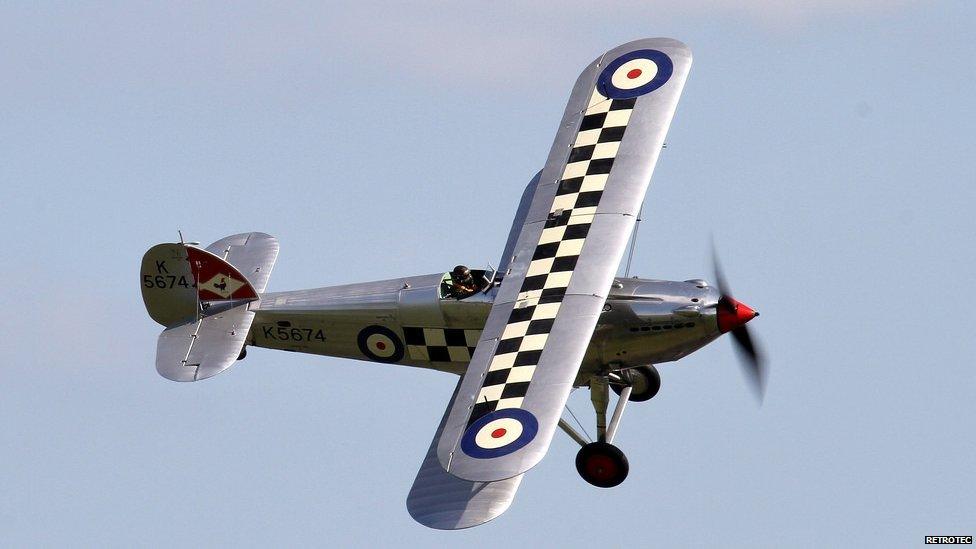
"We only do aeroplanes that no one else wants to do!" says Retrotec's Guy Black. This restored 1930s Hawker Fury fighter is the only one flying in the world
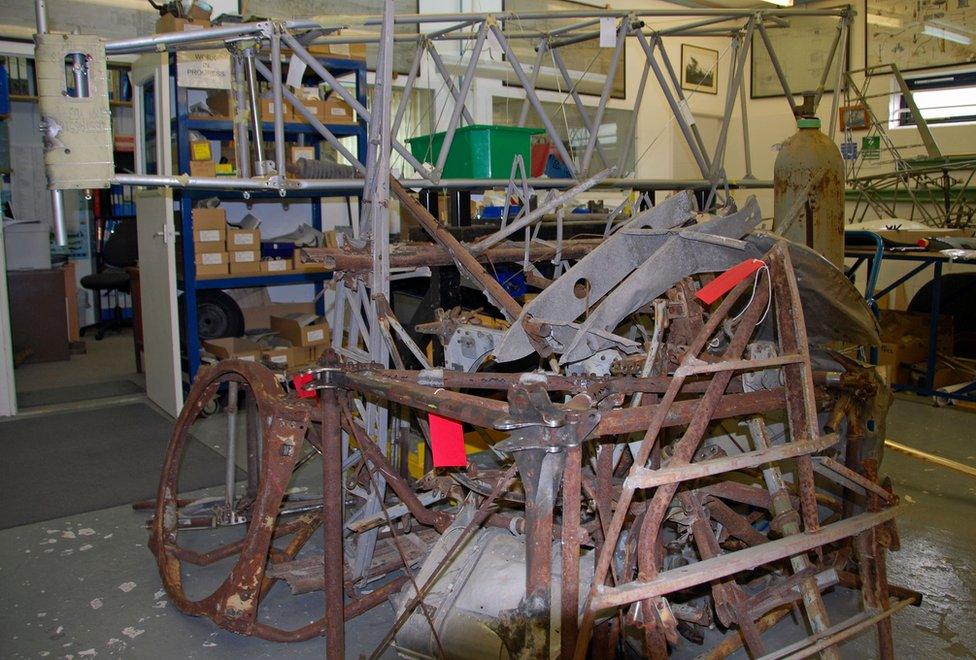
When aircraft first arrive at the workshops, often only the metal parts remain: this is what's left of a Swedish-built version of a 1930s Hawker Hart biplane
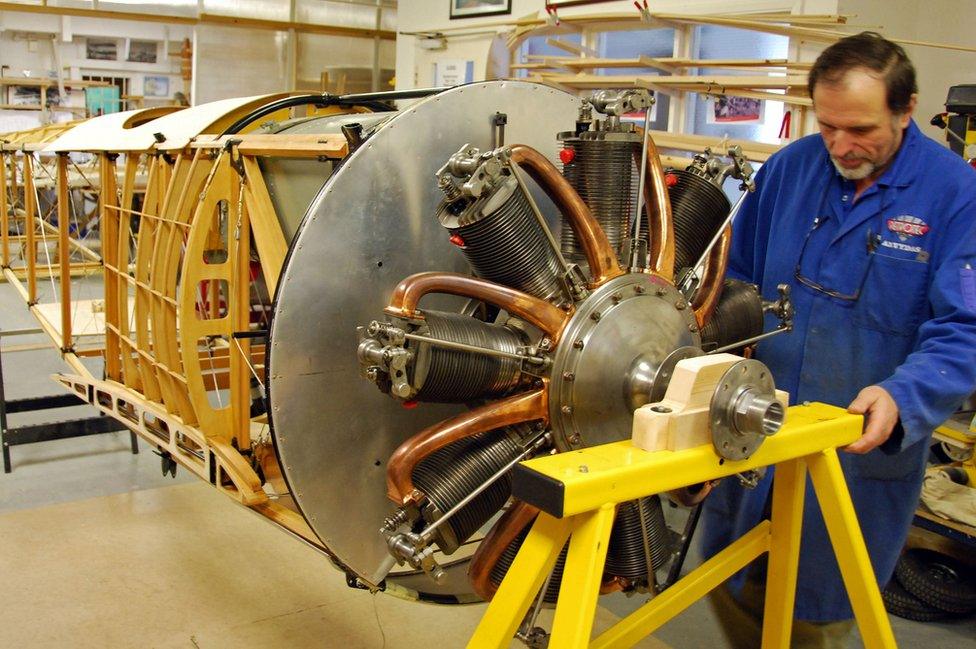
"We started off maintaining old aircraft, moved to restoration and repair, and now we are basically re-manufacturing aircraft," says Guy. This is the fuselage and engine of a World War One Sopwith Pup
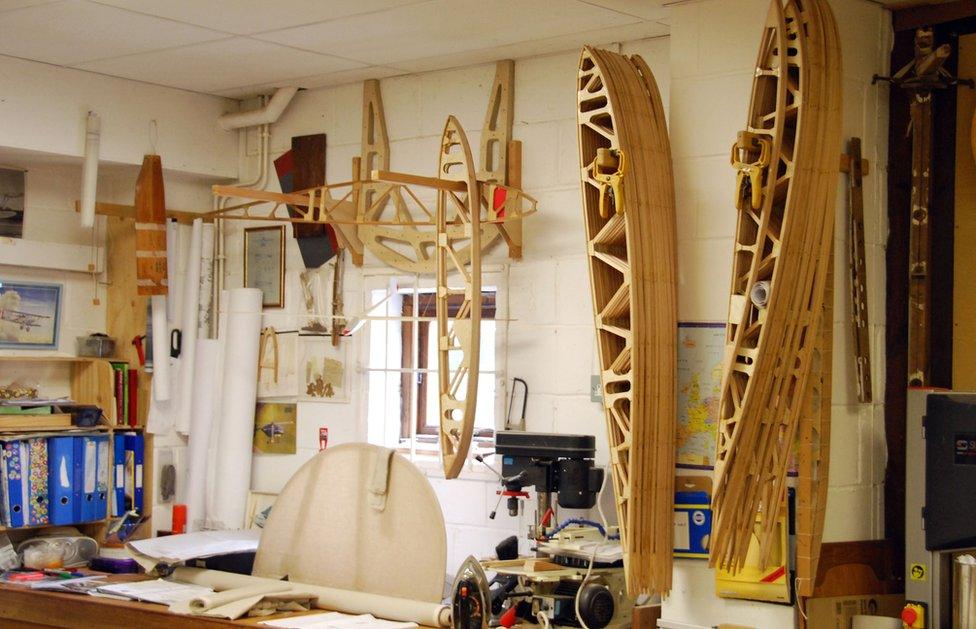
The firm employs 20 people: "I find it especially important to take on apprentices, because there is a very small pool of qualified engineers in our particular trade"
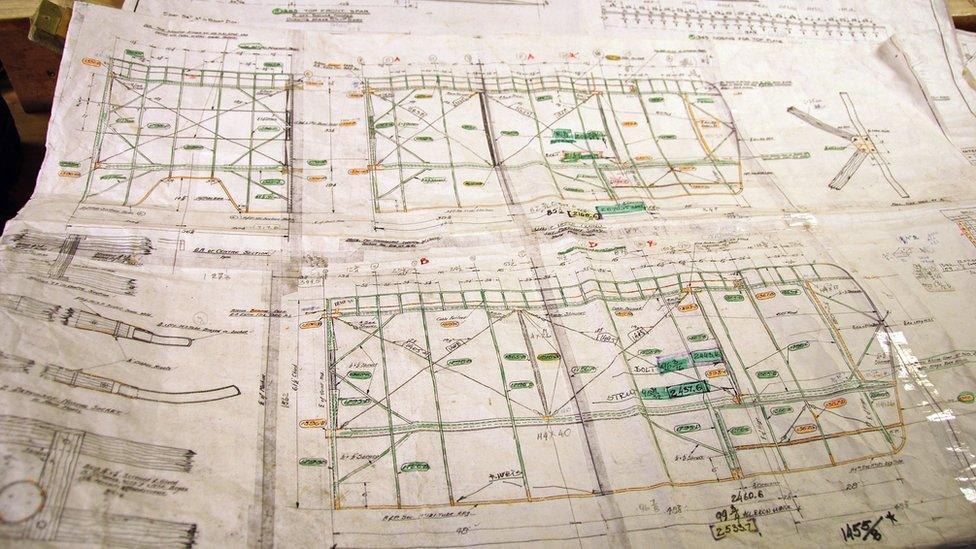
By far the biggest challenge is finding plans and drawings, many of which were thrown away or destroyed
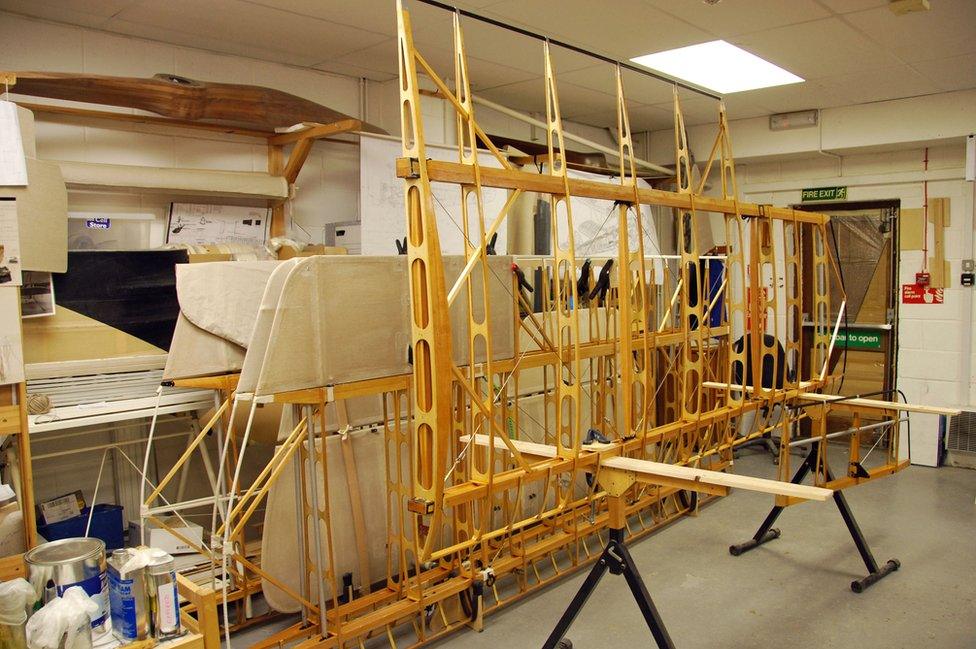
There is a surprising amount of metalwork in early aeroplanes, When wrecks come in some of this can be re-used, but all the wooden parts have to be newly manufactured

A .303 inch Vickers machine gun for a Sopwith Pup being built for a Retrotec customer. It was mounted on the fuselage and fired through the propeller blades thanks to an interrupter gear
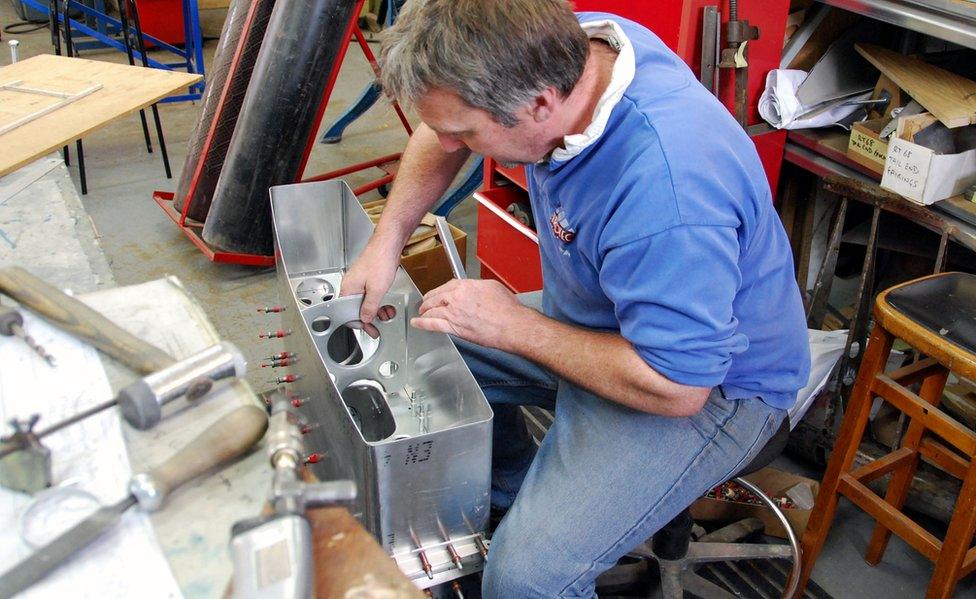
Many components are one-offs: "You could spend all day making one piece of tooling, and then just ten minutes using that to make the actual item," says sheet metal worker Simon Knight. This is a fuel tank for a Hawker Hart
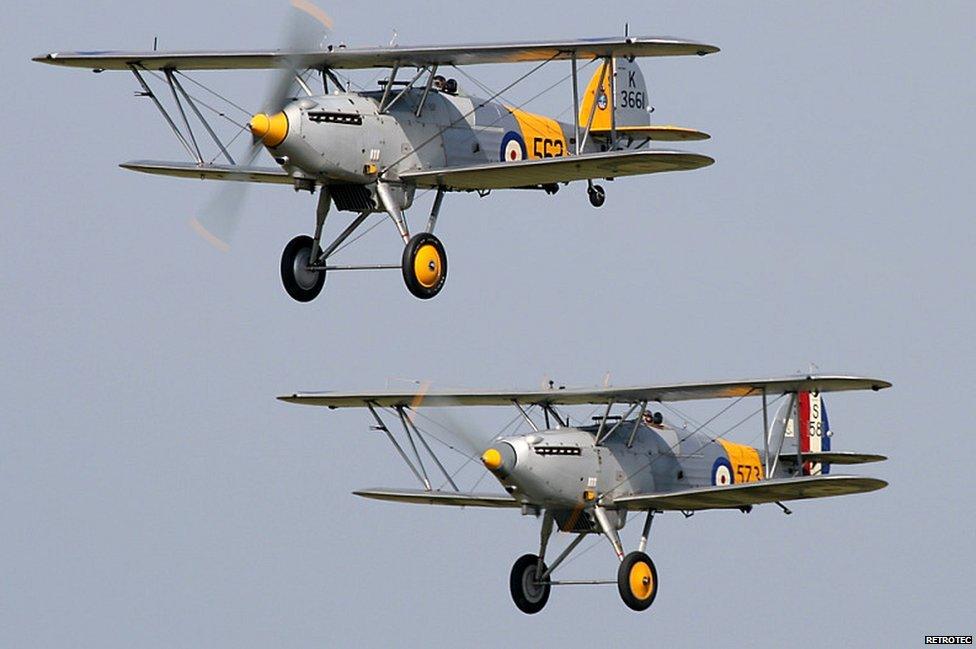
Two restored Hawker Nimrods: "They are works of art. When you have a unique survivor like a Hawker biplane I can't help thinking this will be a stunning long-term investment," says Guy
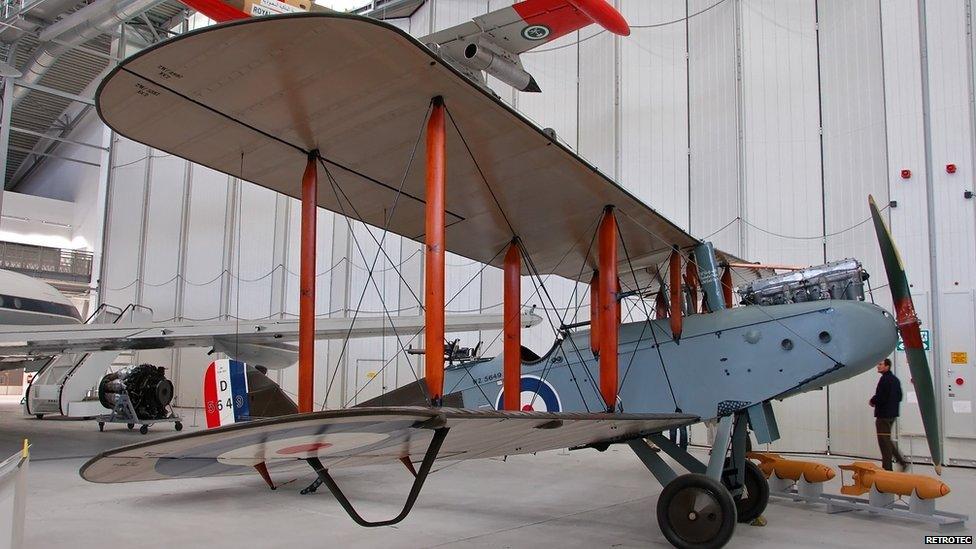
The company is halfway through restoring two World War One DH9 bombers found in an elephant stable in India. The first is now in the Imperial War Museum, Duxford
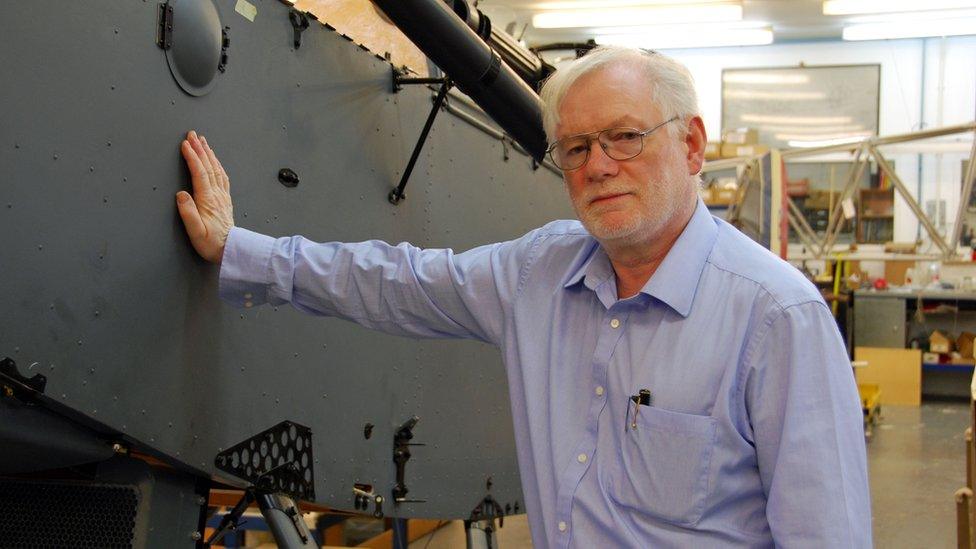
"We have traditional engineering skills here - engine-building, parts manufacture, woodwork, metalwork - everything needed to construct a new aircraft," says Guy
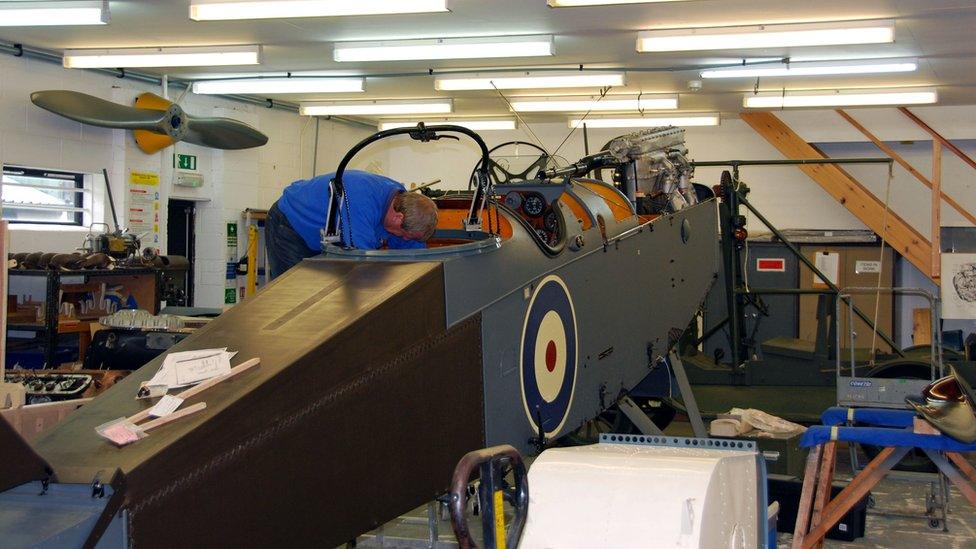
The plan is for their second DH9 to fly once more: "Nobody has ever restored a World War One bomber to fly again"

The DH9 even carries its original War Department certificate: it was sent to India just after World War One as part of the Imperial Gift scheme to the "dominions"
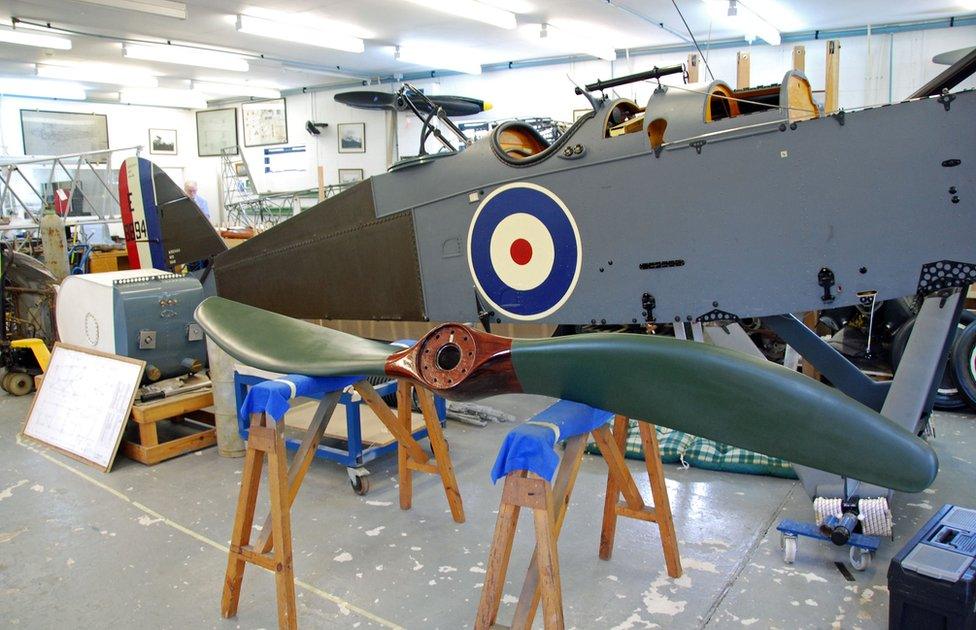
Unfortunately the DH9 no longer had its engine. A replacement came from Canada's aviation museum, says Guy: "It will be the only Siddeley Puma aero engine flying in the world"
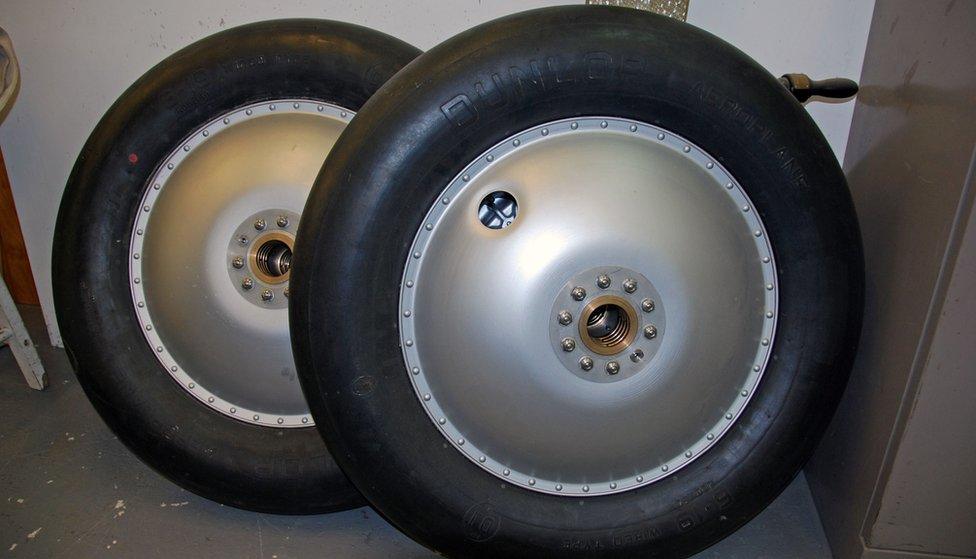
Rebuilding these aircraft does not come cheap. If you're looking to buy this restored DH9 be prepared to pay about £2m ($3m)
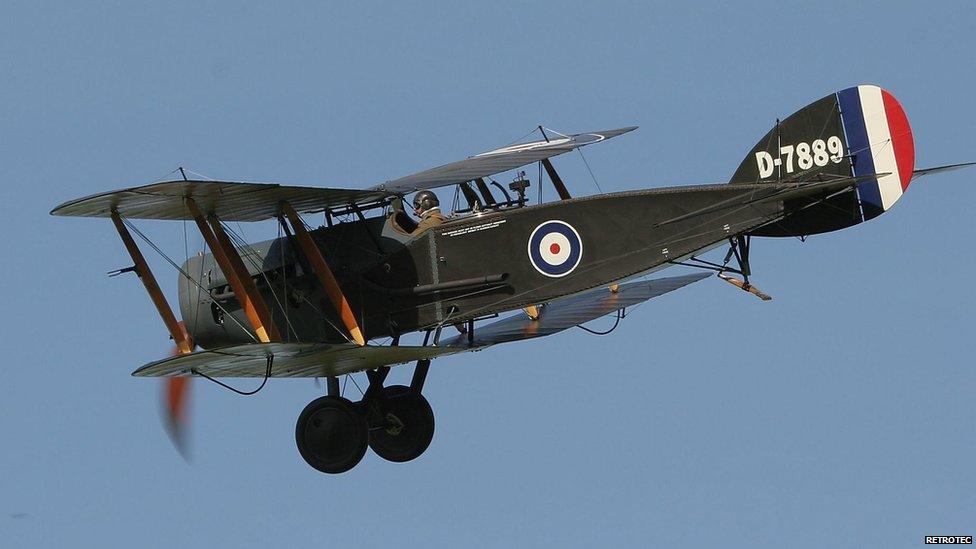
Another project, a World War One Bristol F2B Fighter: "I think I've got about a hundred years' worth of work on projects waiting to be done - hopefully that's going to keep me alive!" says Guy

The silver biplanes of the 1930s are a very important stage of aircraft development, he says: "They are also extremely beautiful, representing an era that will probably never happen again"